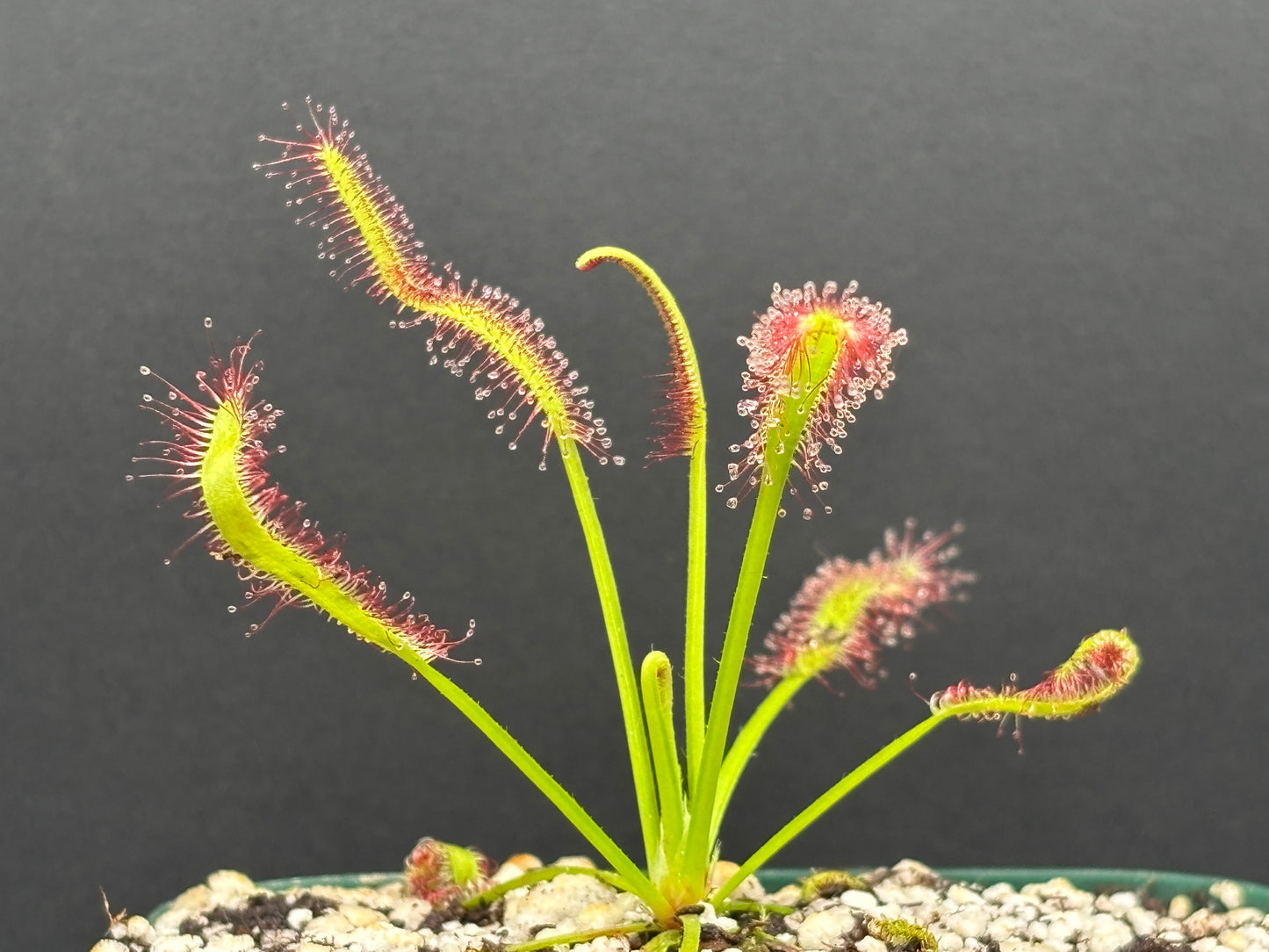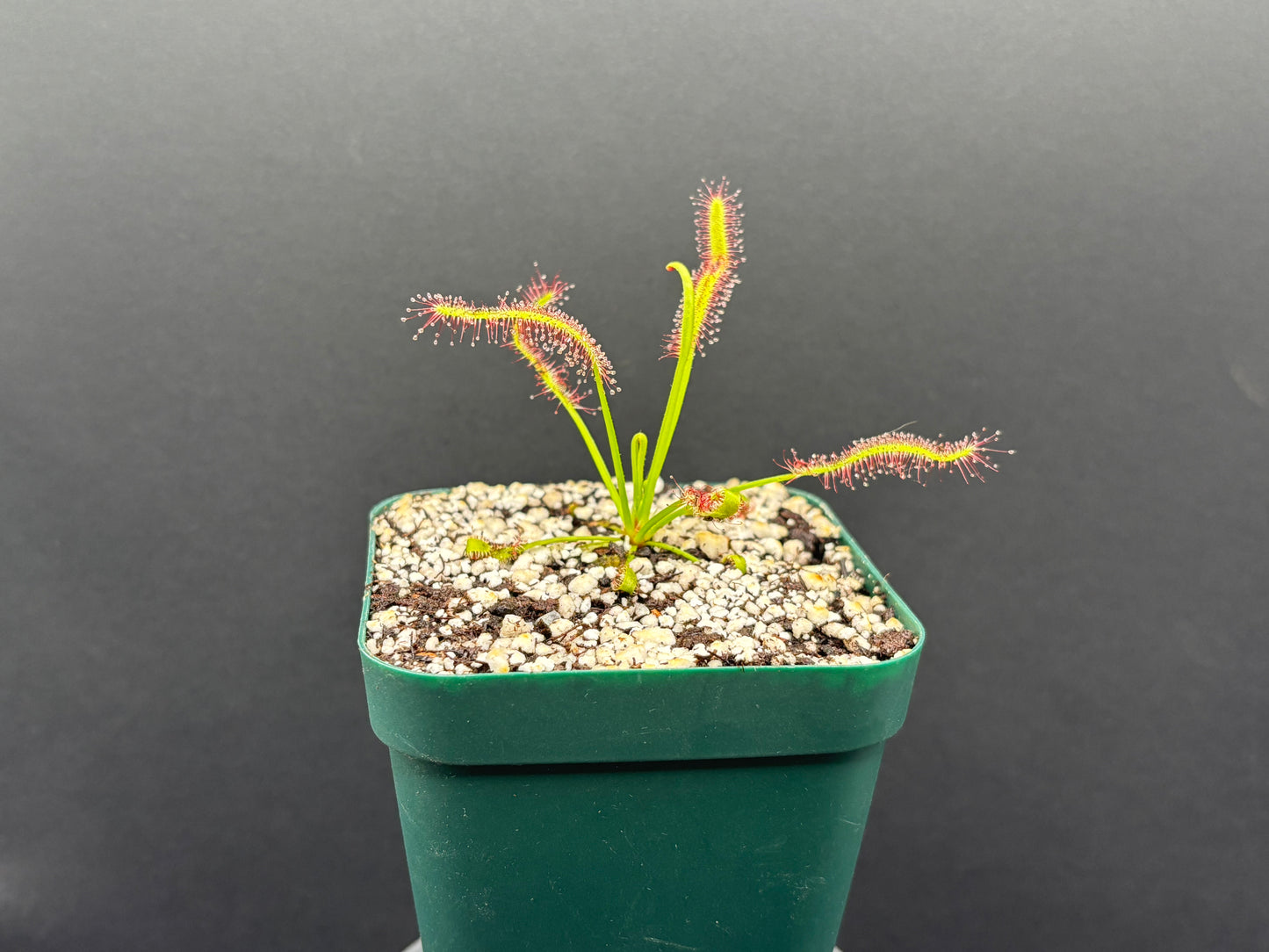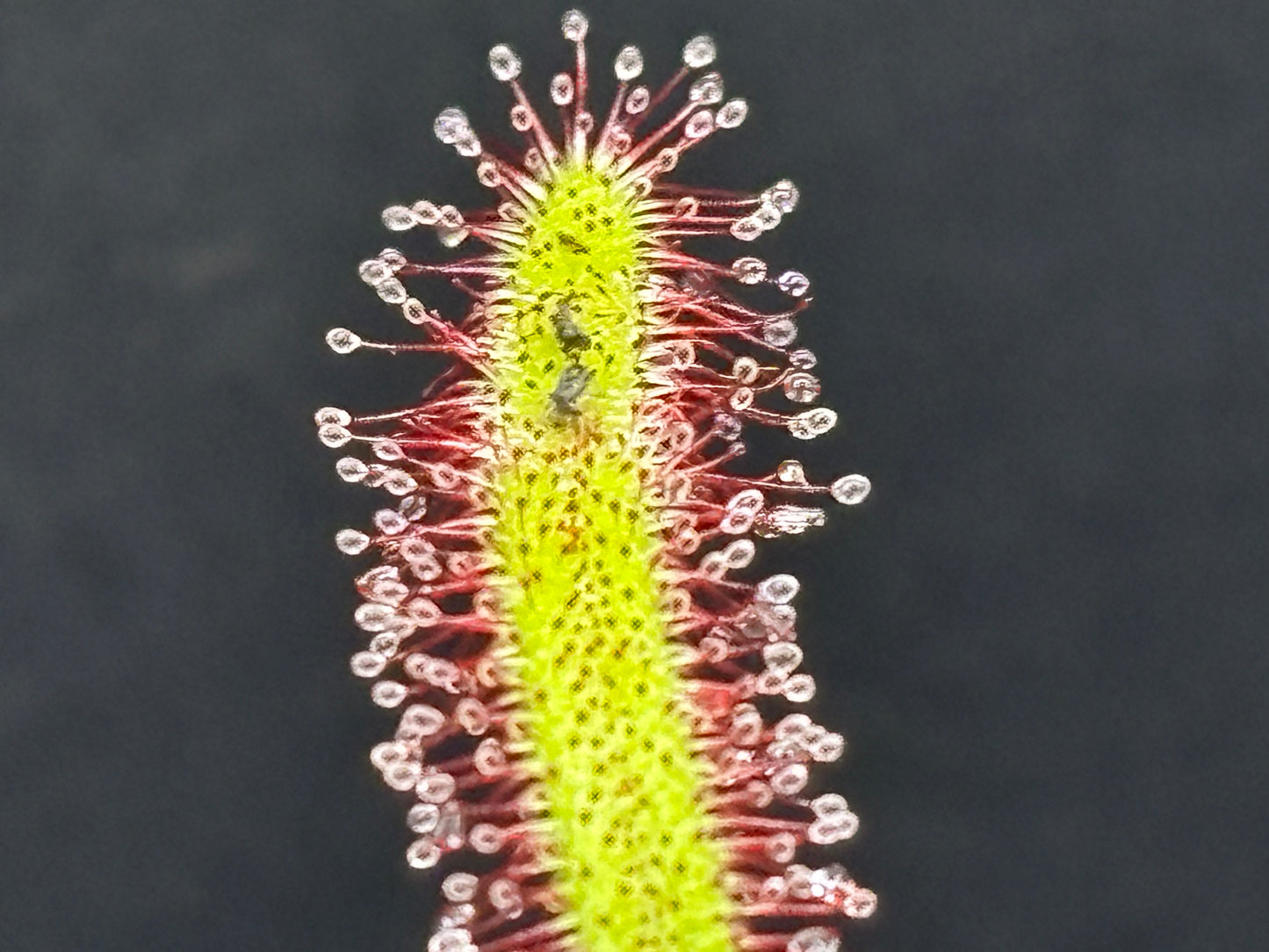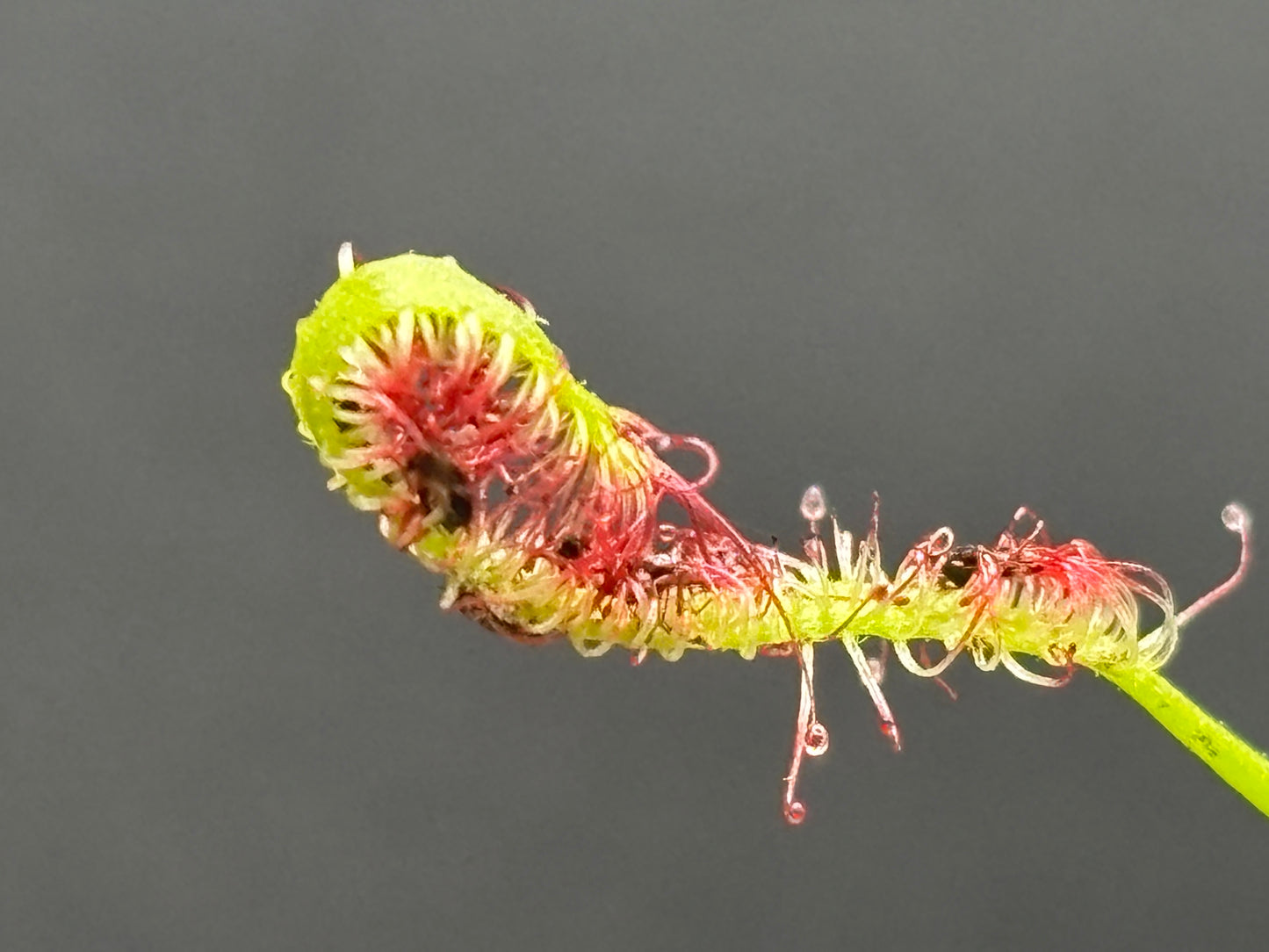Drosera capensis “Red Form”
Drosera capensis “Red Form”
Regular price
$15.00 USD
Regular price
Sale price
$15.00 USD
Unit price
per
Couldn't load pickup availability
GENERAL INFO: Drosera capensis “red” is a cape sundew from South Africa. D.capensis is an extremely rewarding and forgiving species of sundew. Easy to grow and revered for their hardiness and voracious appetite for pests. This form is the red leaf variation.
CULTIVATION REQUIREMENTS:
SOIL/MEDIUM: We use a 3 to 1 or a half and half mix of peat moss and perlite for most Drosera. always use at least some perlite or similar substance to ensure thorough water distribution.
WATER: Tap water is okay depending on water quality. (Aim below 100 TDS). Water the medium from overhead until water flows from the bottom. A tray placed under the pot allows water to collect keeping the plant’s soil saturated throughout the day. Water again once this diminishes, or the pots feels light. Sundews can tolerate boggy/swampy conditions and should never be allowed to dry out.
LIGHT: Drosera can tolerate high light levels. Expect increased mucilage (dew) and slender, red leaves in higher light, and less sticky, wide green leaves under lower light levels. Artificial LED grow lights are appreciated by almost all sundews and if your plant appears to be suffering for unknown reasons, low light may be the cause!
FERTILIZATION: We recommend using MAXSEA brand fertilizer for all carnivorous plants, as these sensitive plants respond very well to this formulation. The plants will naturally catch flying insects like gnats and house flies, and these can be ‘fed’ to the plant by simply ‘sticking’ them to the tentacles! Fertilize 1 every 2 weeks in spring and summer, and once a month in winter.
PLANTLETS: These can be easily pulled from the medium and placed into their own pots of simply medium (half peat half perlite) to form a new plant. Or simply throw them away if you prefer the look of a singular plant in the pot. Over time the plants will need up-potted and dead leaves removed.
DORMANCY: No dormancy period but expect reduced growth and water consumption during the colder season.










